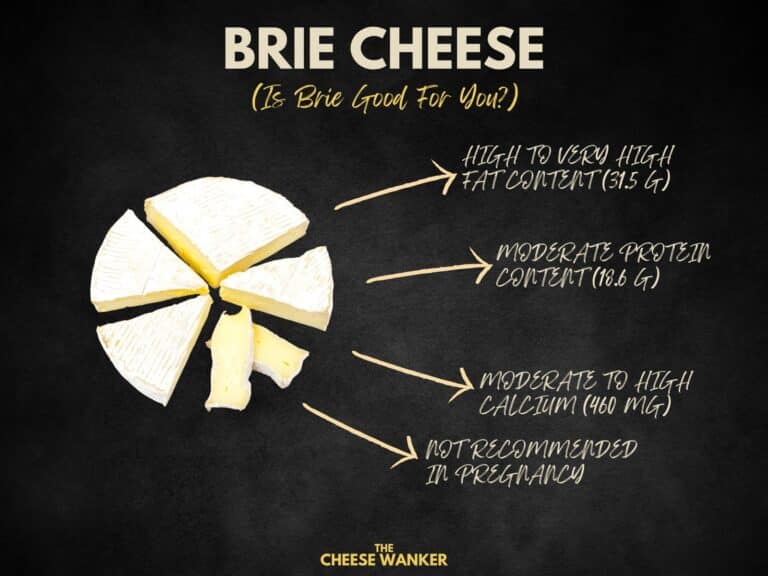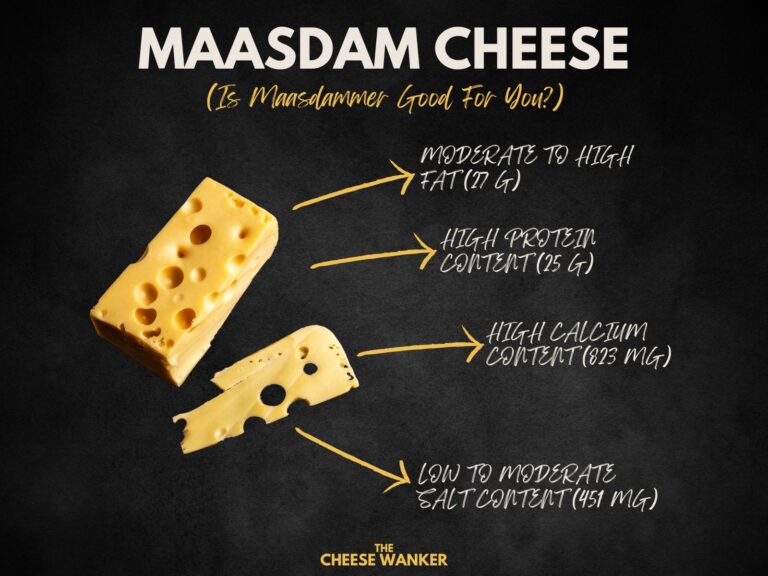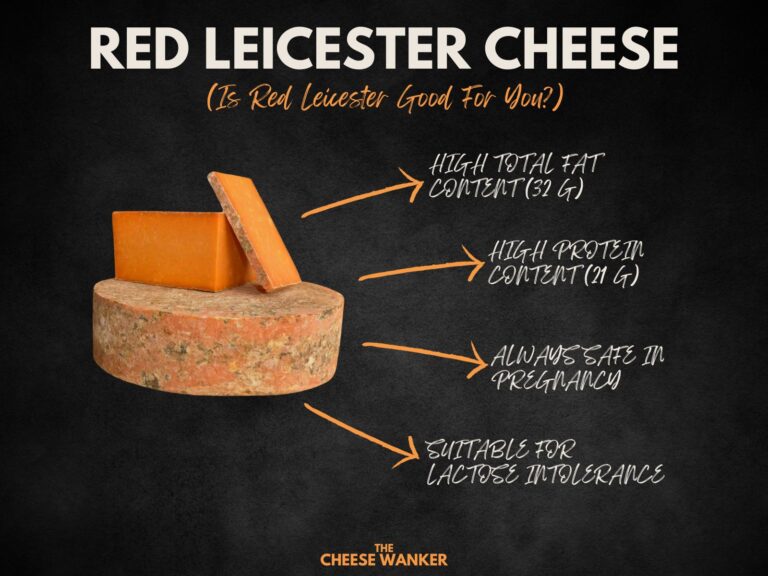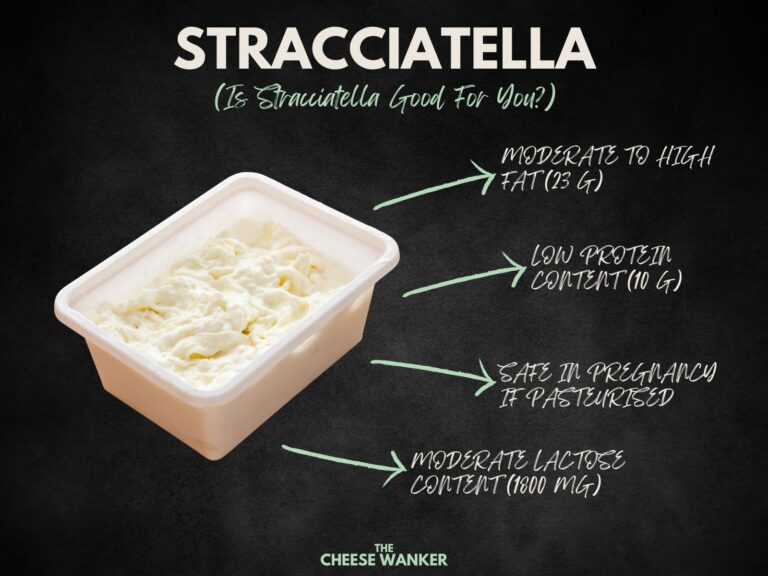Hailing from the delightful traditions of Provence, Chèvre cheese offers a distinct flavour profile and a remarkable array of nutrients. Join us on a journey as we explore the nutrition facts of Fresh Chèvre, unravelling its secrets and shedding light on its potential health benefits.
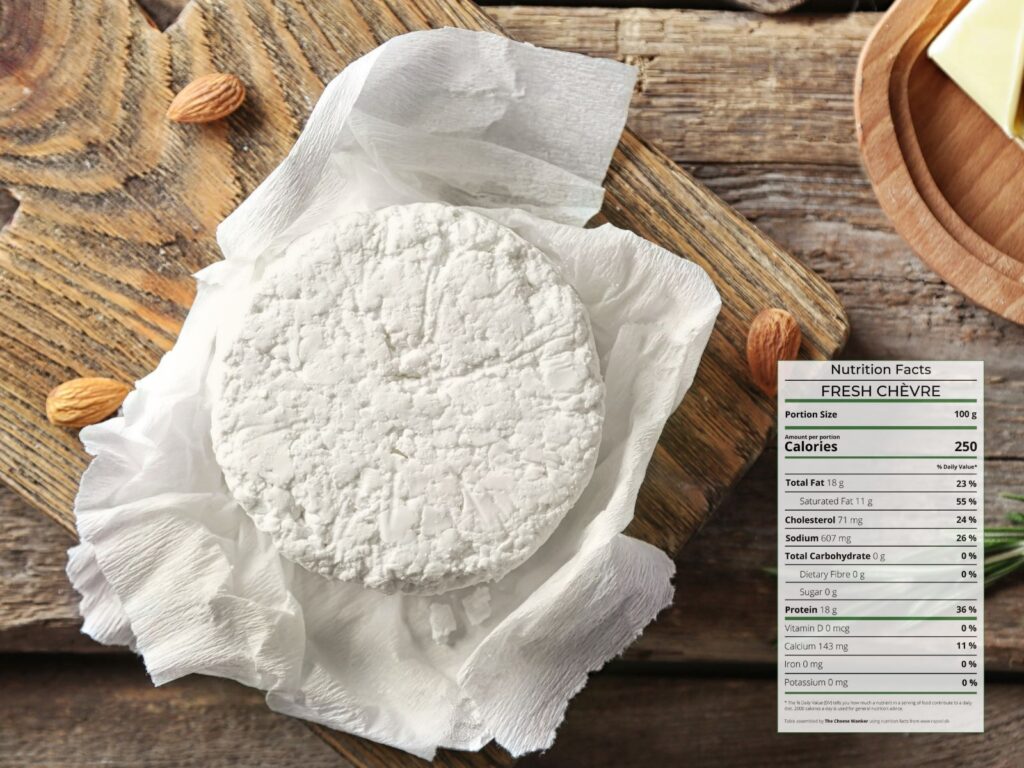
SEE ALSO: Nutrition facts for popular world cheeses in The Cheese Wanker’s index →
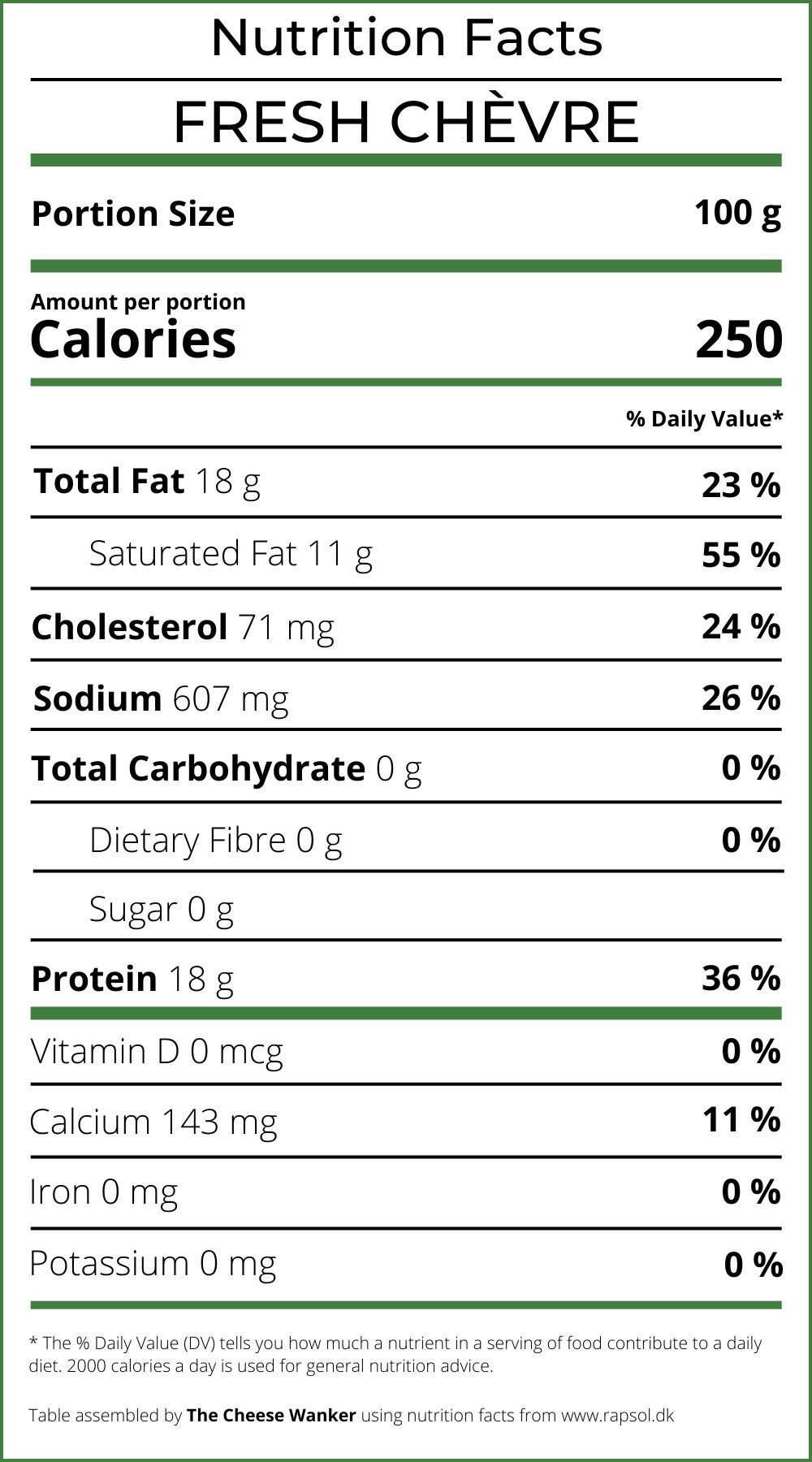
What is Fresh Chèvre?
Chèvre cheese, also known as Goat Cheese, is a type of cheese made from goat’s milk. It has a creamy texture, often characterised by a tangy and slightly tart flavour. This cheese is highly versatile and can be enjoyed in various forms, such as soft or firm.
While Chèvre can be used in French language to describe any cheese made with goat’s milk, we will be looking specifically at the fresh varieties in this post.
Nutrition facts for Fresh Chèvre Cheese
Without a doubt, Fresh Chèvre has gained popularity due to its unique taste and nutritional profile, making it an appealing choice for many cheese enthusiasts.
Here are some of its key nutrition facts:
Lactose Intolerance
For individuals who struggle with lactose intolerance, Fresh Chèvre cheese can be a suitable alternative to other fresh cheeses. Compared to Ricotta and Cottage Cheese, this fresh goat milk cheese tends to be lower in lactose. In fact, most versions of this cheese show no detectable levels of lactose in lab tests.
This makes it easier to digest for those with lactose intolerance. Furthermore, the enzymatic properties of goat’s milk may allow some lactose-intolerant individuals to tolerate Chèvre more comfortably than other dairy products.
Find out everything you’ve ever wanted to know about lactose free cheeses by clicking here.
Fat Content
Chèvre is relatively lower in fat content compared to many other types of cheese, which contributes to its growing popularity. On average, Fresh Chèvre contains approximately 18-20 grams of fat per 100 g serving.
Moreover, these fats are primarily composed of monounsaturated fatty acids, which are considered heart-healthy and can help maintain a balanced lipid profile. However, moderation is key, as excessive consumption of any high-fat food can impact overall caloric intake.
As a result of its moderate fat content, Chèvre is not a great option for people following a ketogenic diet. You can learn more about the keto diet and which cheeses are most keto-friendly by clicking here.
Protein Content
When it comes to protein, Chèvre cheese is a noteworthy source. With approximately 18 grams of protein per 100 g, this cheese can contribute to meeting daily protein requirements.
Protein is essential for various bodily functions, including muscle maintenance, tissue repair and hormone synthesis. Incorporating this cheese into a balanced diet can provide a valuable protein boost, particularly for individuals following vegetarian or low-meat diets.
Want to find out which cheeses have the highest protein content? Click here for our blog post covering protein levels in cheese.
Safety in Pregnancy
Pregnant women often question the safety of consuming certain foods, including cheese. Thankfully, Fresh Chèvre is generally considered safe to eat during pregnancy when made from pasteurized milk.
Pasteurization ensures the elimination of harmful bacteria, making this goat cheese a suitable choice for expectant mothers. However, it is advisable to consult a healthcare professional to ensure specific dietary guidelines are followed during pregnancy.
You can read more about which cheeses you can eat when you’re pregnant by clicking here. As always, if unsure, you should consult your doctor.
Salt Content
Chèvre, like many other cheeses, contains a moderate to high amount of salt. The exact salt content can vary depending on the specific brand and preparation method. While salt adds flavour to the cheese, it’s essential to consume it in moderation.
High sodium intake can be problematic for individuals with certain health conditions, such as hypertension. If monitoring sodium intake, it is advisable to check the label or consult with the cheese producer to ascertain the salt content.
Conclusion
In conclusion, Fresh Chèvre cheese presents a compelling case for both culinary pleasure and nutritional value. With its tangy flavour and creamy texture, it can add a distinct touch to various dishes.
From a nutritional standpoint, Chèvre cheese offers benefits such as being a viable option for lactose-intolerant individuals due to its lower lactose content. Furthermore, its relatively lower fat content and significant protein content make it a valuable addition to a balanced diet.
As with any food, it is important to consume Chèvre cheese in moderation, keeping in mind individual dietary needs and considerations.
References
Overall nutritional content
The nutritional content of cheese in our table comes from the USDA Food Data Central Repository, the Australian Food Composition Database and cheese manufacturers. We realise that there can be variations between different brands and producers. Hence, the numbers we have used are averages.
Fat content
Our fat RDI data comes from Cleveland Clinic’s Healthy Fat Intake resource.
Type of fat in cheese as per Harvard T.H. Chan’s The Nutrition Source.
Protein content
Our protein RDI data comes from Harvard Medical School’s Harvard Health Publishing.
Cholesterol content
Is There a Correlation between Dietary and Blood Cholesterol? Evidence from Epidemiological Data and Clinical Interventions? – Maria Luz Fernandez and Ana Gabriela Murillo
Saturated fat, carbohydrate, and cardiovascular disease – Patty W Siri-Tarino, Qi Sun, Frank B Hu and Ronald M Krauss
Effect of cheese consumption on blood lipids: a systematic review and meta-analysis of randomized controlled trials – Janette de Goede, Johanna M Geleijnse, Eric L Ding, Sabita S Soedamah-Muthu
Safety in pregnancy
All the advice relating to what cheeses you can eat during pregnancy in this article is based on the recommendations by health authorities in Australia, the UK and the USA. If you are unsure about what you can or cannot eat, please consult your doctor.
Australia – FSANZ, United Kingdom – NHS and United Sates of America – FDA
Lactose content
Lactose residual content in PDO cheeses
Detection of lactose in products with low lactose content
The analysis of lactose in milk and cheese products by HPLC
Food Standards ANZ Food Composition Database
Lactose & Galactose content of cheese
